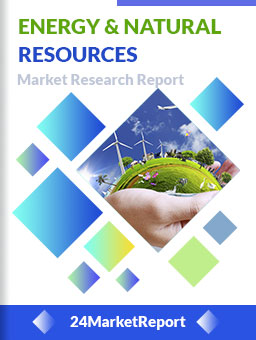
Download FREE Report Sample
Download Free sampleMARKET INSIGHTS
The global commercial aircraft airframe MRO (Maintenance, Repair, and Overhaul) market size was valued at USD 17.35 billion in 2024. The market is projected to grow from USD 18.22 billion in 2025 to USD 24.46 billion by 2032, exhibiting a CAGR of 5.2% during the forecast period.
Commercial aircraft airframe MRO encompasses scheduled inspections, preventive maintenance, and structural modifications required to ensure aircraft airworthiness and compliance with stringent aviation safety regulations. These services include Maintenance and Inspections (dominant segment), Modifications, Upgrades and Refurbishments, and Painting, which collectively enhance operational efficiency and extend aircraft lifecycle.
The market growth is driven by increasing air traffic demand, fleet expansion among airlines, and regulatory mandates for periodic maintenance checks. Additionally, the rising adoption of next-generation aircraft with composite-intensive airframes necessitates specialized MRO solutions. Key players like Lufthansa Technik, AFI KLM E&M, and ST Aerospace dominate the market, leveraging advanced technologies such as predictive analytics and robotics to optimize MRO operations. For instance, in 2023, Lufthansa Technik expanded its digital fleet management solutions to reduce aircraft downtime, reflecting industry trends toward digital transformation.
Expanding Global Aircraft Fleets to Fuel Airframe MRO Demand
The commercial aircraft fleet is projected to grow significantly in the coming years, with narrow-body aircraft expected to constitute over 60% of new deliveries. This expansion is driving substantial demand for airframe MRO services as operators must maintain compliance with stringent aviation safety regulations. Modern aircraft require periodic heavy maintenance checks - ranging from routine inspections to structural overhauls - typically every 6-10 years depending on flight cycles. The growing fleet size directly translates to increased MRO workloads, creating sustained demand for inspection and maintenance services. Current estimates suggest the global commercial aircraft fleet will exceed 36,000 units by 2032, maintaining consistent pressure on MRO providers to deliver timely and compliant services.
Stringent Regulatory Oversight Necessitates Regular Maintenance Checks
To know more about market statistics, Download a FREE Sample copy
Aviation authorities worldwide mandate comprehensive maintenance programs that cannot be deferred without significant penalties. Regulatory bodies like FAA and EASA enforce strict airworthiness directives requiring scheduled maintenance checks categorized from A through D, with D-checks being the most extensive and expensive. These regulations create a predictable, recurring revenue stream for MRO providers. Recent updates to damage tolerance and aging aircraft programs have further increased scrutiny on structural components, driving additional inspection requirements. The global aviation safety framework essentially guarantees continuous demand for airframe MRO services regardless of economic conditions, as aircraft cannot legally operate without required maintenance certification.
Workforce Shortages and Skills Gap Challenge MRO Operations
The airframe MRO industry faces significant workforce challenges, with an estimated shortage of over 50,000 certified technicians globally. The skills required for modern aircraft maintenance - including composite repairs and advanced avionics - require extensive training that many existing workers lack. This shortage leads to longer turnaround times and increased labor costs, potentially delaying aircraft returning to service. While aviation is recovering strongly post-pandemic, many experienced technicians left the industry permanently, exacerbating the personnel deficit. The situation is particularly acute in developed markets where experienced technicians are retiring faster than new ones can be trained, creating operational bottlenecks for MRO providers managing large maintenance campaigns.
Other Restraints
Supply Chain Disruptions
The airframe MRO sector continues experiencing parts shortages and extended lead times for critical components. Supply chain challenges that emerged during the pandemic have not fully resolved, particularly for specialized structural components and avionics systems. Some replacement parts now require 12-18 months for delivery, forcing operators to keep aircraft grounded awaiting parts or cannibalize others - both expensive propositions that increase MRO costs.
Geopolitical Factors
Regional instability and trade restrictions impact the globally distributed MRO ecosystem. Sanctions, export controls, and customs delays create uncertainty in parts procurement and cross-border maintenance operations, particularly affecting fleets with diverse aircraft types requiring specialized technical support.
Digital Transformation and Predictive Maintenance Open New Revenue Streams
The adoption of IoT sensors and advanced analytics enables predictive maintenance capabilities that can significantly enhance airframe MRO efficiency. Real-time structural health monitoring systems now allow for condition-based maintenance rather than fixed schedules, reducing unnecessary downtime and optimizing resource allocation. Major MRO providers are investing heavily in digital twin technology, which can simulate aircraft structural conditions and predict component failures with over 90% accuracy. These innovations create opportunities for premium service offerings and long-term maintenance contracts that lock in fleet operators. The digital MRO market segment is projected to grow at nearly double the rate of traditional services as operators seek data-driven solutions to improve aircraft utilization.
Emerging Markets Present Untapped Growth Potential
Asia-Pacific and Middle Eastern markets currently account for less than 30% of global airframe MRO capacity despite representing over 40% of fleet growth. Countries like India and Vietnam are experiencing double-digit aviation growth without commensurate expansion in local MRO capabilities, creating significant opportunities for service providers. Governments across these regions are implementing favorable policies to develop aviation maintenance ecosystems, including tax incentives and infrastructure investments. Strategic partnerships with local operators can provide established MRO providers access to these high-growth markets while avoiding the full costs of greenfield development. The expansion of low-cost carriers in these regions particularly favors providers offering efficient, cost-competitive narrow-body maintenance solutions.
MARKET CHALLENGES
Composite Material Repairs Present Technical Complexities
Modern aircraft increasingly incorporate composite materials that require specialized repair techniques differing significantly from traditional aluminum structure maintenance. The Boeing 787 and Airbus A350 contain over 50% composite materials by weight, necessitating expensive equipment and trained technicians for proper repairs. Many existing MRO facilities lack the clean rooms, autoclaves, and trained personnel required for composite work, forcing operators to use OEM service centers at premium prices. The industry faces a $4 billion infrastructure investment gap for composite repair capabilities, creating a bottleneck as more composite-intensive aircraft enter MRO cycles. Smaller providers particularly struggle with the capital requirements to establish compliant composite repair stations, potentially consolidating the market around larger players.
Environmental Regulations Increase Compliance Costs
New environmental standards for paint stripping, waste disposal, and chemical usage are significantly altering airframe MRO operations. Traditional paint removal methods using chemical strippers are being phased out due to environmental concerns, requiring adoption of laser or media blasting alternatives that can triple process costs. Stricter regulations on volatile organic compounds (VOCs) and hazardous material handling require facility upgrades and additional permitting. These environmental compliance costs are particularly challenging for smaller regional MRO providers operating on thin margins, potentially driving further industry consolidation as operators favor facilities with full environmental certifications.
Maintenance and Inspections Segment Dominates Due to Regulatory Compliance Requirements
The market is segmented based on type into:
Maintenance and Inspections
Subtypes: Routine checks, heavy maintenance, structural repairs
Modifications
Upgrades and Refurbishments
Painting
Air Transport Segment Maintains Leadership Due to High Fleet Utilization Rates
The market is segmented based on application into:
Air Transport
BGA (Business and General Aviation)
Independent MRO Providers Gaining Market Share Through Specialized Services
The market is segmented based on service provider into:
OEM (Original Equipment Manufacturer) Providers
Independent Providers
Airline-affiliated Providers
Narrow-body Aircraft Segment Leads Due to High Global Fleet Size
The market is segmented based on aircraft type into:
Narrow-body Aircraft
Wide-body Aircraft
Regional Jets
Market Leaders Invest in Capacity Expansion and Digital Solutions
The global commercial aircraft airframe MRO market features a competitive ecosystem where established players compete with regional specialists and airline-affiliated maintenance providers. Lufthansa Technik leads the industry with over $6 billion in annual revenue, leveraging its global network of 35 maintenance facilities and strong partnerships with major OEMs. The company's dominance stems from its comprehensive service portfolio spanning narrow-body, wide-body, and VIP aircraft maintenance.
AFI KLM E&M and ST Aerospace maintain significant market positions, collectively accounting for nearly 25% of the global airframe MRO revenue. These players have strengthened their positions through strategic acquisitions and investments in next-generation MRO technologies, including predictive maintenance systems and robotics solutions.
North American competitors like AAR Corp. and Delta TechOps are expanding their service capabilities to capitalize on the growing demand from low-cost carriers and cargo operators. Recent developments include AAR's $100 million facility expansion in Oklahoma and Delta's launch of a new composite repair center in Atlanta.
The Asia-Pacific market sees intense competition from players such as Haeco and SIA Engineering, which benefit from the region's rapidly expanding aviation sector. These companies are investing heavily in digital MRO platforms to improve service efficiency while managing labor cost advantages compared to Western competitors.
The commercial aircraft airframe MRO industry is undergoing a paradigm shift driven by digital transformation and predictive maintenance technologies. Airlines and MRO providers are increasingly adopting IoT-enabled sensors, AI-driven diagnostics, and blockchain-based maintenance records to optimize operations. Predictive analytics now allow for condition-based maintenance, reducing unscheduled downtime by up to 35% while extending component lifecycles. Major players are investing in digital twin technologies that create virtual replicas of aircraft, enabling real-time performance monitoring and early fault detection. This technological evolution is expected to contribute significantly to the projected $24.46 billion market value by 2032.
Sustainability-Driven MRO Practices
Environmental considerations are becoming central to airframe MRO operations, with 60% of major airlines now incorporating sustainable practices into their maintenance programs. Lightweight composite repairs, eco-friendly paint stripping methods using laser technology, and the adoption of water-based aircraft paints are reducing environmental impact while cutting maintenance costs by 15-20%. The push towards circular economy principles is accelerating parts recycling programs, with some MRO facilities achieving 85% material reuse rates during heavy maintenance checks.
The Asia-Pacific region is witnessing unprecedented growth in MRO infrastructure development, accounting for 42% of new facility investments globally. This expansion is driven by booming air travel demand and the rapid modernization of airline fleets in China and India. Meanwhile, Middle Eastern hubs are establishing themselves as global MRO centers, leveraging their strategic geographic location to service both eastern and western routes. These developments are creating a more geographically balanced MRO landscape, reducing the traditional dominance of North American and European service providers while improving turnaround times for airlines operating in growing markets.
North America
The North American commercial aircraft airframe MRO market is characterized by stringent regulatory oversight from the FAA (Federal Aviation Administration) and a robust airline industry. The U.S. dominates the region, accounting for over 85% of demand, driven by aging fleets requiring heavy maintenance checks (C and D checks). With fleet utilization returning to pre-pandemic levels, operators are prioritizing maintenance efficiency and cost optimization. Major players like AAR Corp. and Delta TechOps are expanding capabilities to handle next-generation aircraft like the Boeing 787 and Airbus A350. The region is also witnessing growing demand for predictive maintenance solutions enabled by IoT and AI-driven analytics.
Europe
Europe maintains its position as the second-largest airframe MRO market globally, supported by EASA's (European Union Aviation Safety Agency) strict compliance standards and high aircraft utilization rates. Lufthansa Technik and SR Technics lead the regional market with extensive service networks. The region faces workforce shortages in specialized maintenance roles, driving investments in training programs and automation. Sustainability is becoming a key focus, with MRO providers adopting eco-friendly paint stripping techniques and lightweight composite repair technologies. The growth of low-cost carriers continues to fuel demand for efficient turnaround services across European hubs.
Asia-Pacific
Asia-Pacific represents the fastest-growing airframe MRO market, projected to surpass North America by 2028. China's rapid commercial aviation expansion and India's booming domestic market are driving unprecedented demand. Haeco and SIA Engineering lead regional operations, while local players like Ameco Beijing are scaling capabilities. Unique challenges include varying regulatory standards across countries and limited technical expertise for newer aircraft models. However, the region benefits from lower labor costs and government support for aviation infrastructure. Emerging technologies like robotics for exterior inspections are gaining traction at major Asian MRO facilities.
South America
The South American airframe MRO market remains relatively underdeveloped despite recent fleet modernization among regional carriers. Economic instability and currency fluctuations continue to impact maintenance budgets, pushing airlines to defer heavy checks when possible. Brazil represents the largest market, though most widebody maintenance is outsourced to North America or Europe. Local providers are focusing on narrowbody expertise to serve growing low-cost operators. Infrastructure limitations and high import costs for parts remain significant barriers to market expansion in the region.
Middle East & Africa
This region presents a dichotomy between the advanced MRO capabilities in Gulf states and the underdeveloped infrastructure across much of Africa. UAE-based providers like Etihad Engineering have established world-class facilities serving both regional and international operators. The African market shows potential but suffers from fragmented regulatory environments and limited investment in maintenance infrastructure. South Africa remains the most developed market, while North African countries are increasingly attracting MRO investments to service European and Middle Eastern carriers. The region's strategic location along global flight paths offers long-term growth opportunities for airframe maintenance providers.
This market research report offers a holistic overview of global and regional markets for the forecast period 2025–2032. It presents accurate and actionable insights based on a blend of primary and secondary research.
✅ Market Overview
Global and regional market size (historical & forecast)
Growth trends and value/volume projections
✅ Segmentation Analysis
By product type or category
By application or usage area
By end-user industry
By distribution channel (if applicable)
✅ Regional Insights
North America, Europe, Asia-Pacific, Latin America, Middle East & Africa
Country-level data for key markets
✅ Competitive Landscape
Company profiles and market share analysis
Key strategies: M&A, partnerships, expansions
Product portfolio and pricing strategies
✅ Technology & Innovation
Emerging technologies and R&D trends
Automation, digitalization, sustainability initiatives
Impact of AI, IoT, or other disruptors (where applicable)
✅ Market Dynamics
Key drivers supporting market growth
Restraints and potential risk factors
Supply chain trends and challenges
✅ Opportunities & Recommendations
High-growth segments
Investment hotspots
Strategic suggestions for stakeholders
✅ Stakeholder Insights
Target audience includes manufacturers, suppliers, distributors, investors, regulators, and policymakers
-> Key players include Lufthansa Technik, AFI KLM E&M, ST Aerospace, AAR Corp., SR Technics, SIA Engineering, Delta TechOps, Haeco, JAL Engineering, Ameco Beijing, and ANA.
-> Key growth drivers include increasing aircraft fleet size, stringent aviation safety regulations, rising demand for cost-effective maintenance solutions, and the aging commercial aircraft fleet.
-> Asia-Pacific is the fastest-growing region due to expanding aviation infrastructure, while North America remains the largest market with mature MRO capabilities.
-> Emerging trends include predictive maintenance using AI/ML, 3D printing for spare parts, digital twin technology, and sustainable MRO practices.

Speak to our Custom Research Team and get the Custom Research in a budget
Custom ResearchFrequently Asked Questions ?
A license granted to one user. Rules or conditions might be applied for e.g. the use of electric files (PDFs) or printings, depending on product.
A license granted to multiple users.
A license granted to a single business site/establishment.
A license granted to all employees within organisation access to the product.
Upto Working 24 to 48 hrs
Upto 72 hrs max - Weekends and Public Holidays
Online Payments with PayPal and CCavenue
Wire Transfer/Bank Transfer
Hard Copy




 Industry Market Size
Industry Market Size SWOT Analysis
SWOT Analysis Industry Major Players
Industry Major Players Revenue Forecasts
Revenue Forecasts Historical and Forecast Growth
Historical and Forecast Growth Profitability Analysis
Profitability Analysis
























